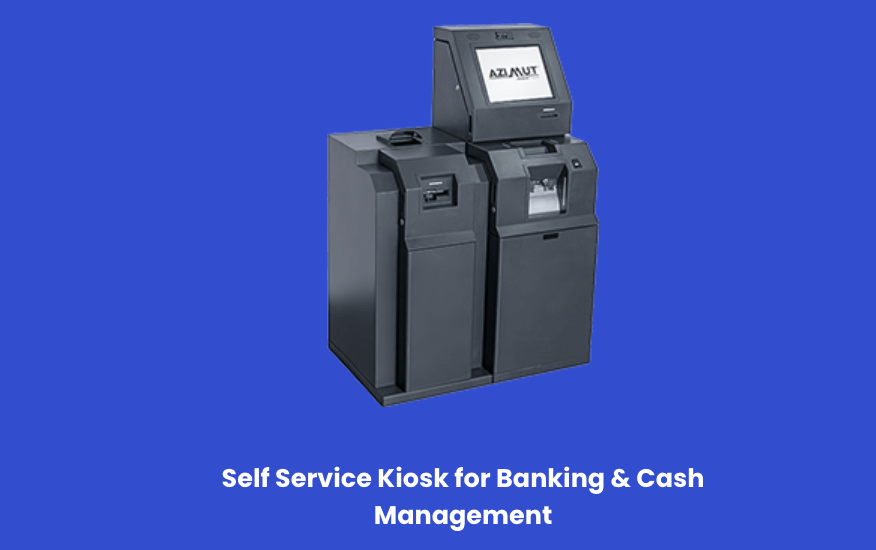Traditional banking models are undergoing a significant shift with the evolving digital landscape. This has led to a need for bank branch transformation.
As customers adopt digital technologies in banking, bank branches must keep up with the trends to deliver online and physical services. It is imperative to meet the changing customer expectations and drive operational efficiency.
- Here are a few statistics to help you understand the drastic shift in banking trends:
- According to the S&P Global Market Intelligence data report, US banks closed 149 branches and opened 49 in March. Similar trends have been apparent since the 2021 pandemic.
- As per Galileo Financial Technologies, 77% of U.S. adults still use traditional banks. However, 61% of consumers are highly likely to switch to a digital-only provider.
- These show that physical banking with seamless integration of digital services stays of utmost relevance. Banks can blend physical and digital experiences harmoniously by embracing branch transformation strategies.
The benefits of bank branch transformation are evident. A study revealed that satisfaction levels among customers improved by 28% following modernization efforts for branch transformation.
In this blog, we discuss the key drivers and the benefits of bank branch transformation. You get an insight into the practical world with scenarios of bank branch transformation.
Let’s explore what is bank branch transformation in this digital era!
What is branch transformation in banking?
Branch transformation in banking means changing traditional bank branches to meet modern needs. This involves using new technology like self-service kiosks, mobile apps, and online platforms to make banking easier and faster.
It also includes improving how banks serve customers by reducing wait times and offering personalized services.
By transforming branches, banks can provide better customer experiences, meet customer expectations, and stay competitive with digital-only banks and fintech companies.
This way, online and offline banking work smoothly, making it more convenient for everyone.
When Should Your Branch Consider a Transformation?
Your bank branch should consider a transformation when you notice several vital signs:
- Customer Dissatisfaction: If customers are unhappy with long wait times or limited services, it’s time to consider upgrading. Modern customers expect quick, efficient service and personalized attention, which is necessary to avoid losing them to digital-only banks or other competitors.
- Outdated Technology: If your technology is outdated, it can slow down processes and frustrate customers and staff. New technology, like self-service kiosks, mobile apps, and online platforms, can make banking easier and faster.
- Increasing Customer Expectations: More people want to manage their money online but still appreciate having a local branch for specific needs. If you see an increase in these expectations, it’s a sign to modernize your branch.
- Growing Competition: If there’s growing competition in your area, transforming your branch can help you stand out. Offering unique services and a better customer experience can attract and keep more customers.
Transforming your branch helps you stay relevant, improve customer satisfaction, and meet the needs of today’s banking world. Adopting new technology and better services can give your branch a competitive edge.
Key Drivers of Bank Branch Transformation
Bank branch transformation allows banks to maintain their market position and remain competitive in an increasingly crowded banking sector. Learn about features that drive bank branch transformation to help your bank stand out.
1. Technological Advancements

The advances in technology are important in driving bank branch transformation. With the rapid pace of innovation, banks embrace cutting-edge technologies to enhance services.
Digital banking solutions include mobile apps and online platforms.
Advancements enable banks to offer convenient self-service options. These include online banking, mobile deposits, and remote account management integrated with banking self-service kiosks.
This makes customers feel empowered and gives them control over transactions.
Artificial intelligence (AI) and chatbots enable banks to provide personalized assistance, and Customers appreciate a 24/7 customer support channel.
Additionally, real-time transaction monitoring and automated processes deliver faster services to customers.
2. Changing Customer Expectations

Customers expect banks to keep up with the changing banking behavior. They want convenience in the banking experience and flexibility in stitching between offline and online services.
Customers expect modern banking to tend to personalized individual needs. Customers want to transition effortlessly between physical branches and digital platforms. They want quick access to information, easy-to-use interfaces, and prompt service delivery.
Bank branch transformation can offer digital solutions in branches. Queue management software allows customers to reserve a spot in the queue. This reduces mismanaged queues and improves customer flow and wait times for customer satisfaction.
3. Increasing Competition in the Banking Sector
The entry of fintech companies and digital banking in the financial sector is giving the banking industry heightened competition. This creates a competitive landscape that pressures traditional banks to innovate and differentiate themselves.
Bank branch transformation has become essential for staying relevant and attracting and retaining customers. By transforming branches, banks can offer unique propositions to differentiate services and stand out from competitors.
To create an immersive and customer-centric environment, banks can provide WhatsApp Appointments. This is a modern platform of communication that reduces queuing anxiety, making customers feel valued.
Strategic Approaches to Bank Branch Transformation
Transforming a bank branch requires strategic planning. Here are four fundamental approaches to consider for effective transformation:
1. Digital-First Strategy
A digital-first strategy focuses on prioritizing digital channels to improve customer experiences. This means investing in online banking platforms, mobile apps, and self-service kiosks. By doing so, banks can offer convenient, 24/7 access to banking services.
- Online Banking Platforms allow customers to manage their accounts, pay bills, and transfer money without visiting a branch. This saves time and increases customer satisfaction.
- Mobile Apps: With mobile banking apps, customers can perform banking tasks on the go. Features like mobile deposits and balance checks make banking more accessible.
- Self-Service Kiosks: Placing kiosks in branches enables customers to perform tasks like cash deposits and withdrawals independently, reducing wait times and freeing up staff to handle more complex inquiries.
Adopting a digital-first strategy helps banks stay competitive and meet the growing demand for digital banking solutions.
2. Omnichannel Banking Experience
Creating an omnichannel banking experience means ensuring customers have a smooth experience across all channels, whether online, mobile, or in-branch. This approach integrates digital and physical banking services.
- Consistent Service: Customers can start a transaction online and complete it at a branch without repeating information. This continuity increases convenience and satisfaction.
- Unified Data Systems: Unified data systems allow for real-time updates and consistent information across all platforms. This ensures that customers receive accurate and up-to-date information no matter how they choose to bank.
- Cross-Channel Promotions: Banks can offer promotions that are accessible both online and offline, encouraging customers to use multiple channels and increasing engagement.
3. Customer-Centric Approach
A customer-centric approach focuses on understanding and meeting each customer’s unique needs. This involves collecting and analyzing customer data to provide personalized services and improve the customer journey.
- Personalized Services: Banks can use data analytics to offer tailored products and services based on customer preferences and behaviors.
- Feedback Systems: Implementing feedback systems allows banks to gather customer insights and make necessary improvements. This helps address pain points and enhance customer satisfaction.
- Enhanced Communication: Banks can use various communication channels, such as email, SMS, and social media, to keep customers informed and engaged with relevant updates and offers.
Adopting a customer-centric approach helps banks build stronger relationships and advance customer loyalty.
4. Branch Network Optimization
Branch network optimization involves strategically redesigning branch locations and functions to maximize efficiency and better serve customers. This can include closing underperforming branches, opening new ones in high-demand areas, and reconfiguring existing branches.
- Branch Closures and Openings: Analyzing customer demographics and behavior helps decide which branches to close or relocate. Opening new branches in underserved areas can attract more customers.
- Reconfiguring Branches: Transforming branches into service-oriented hubs with modern amenities and technologies can improve the customer experience. This includes adding self-service kiosks, comfortable waiting areas, and interactive service points.
- Staff Training: Investing in staff training ensures employees are well-equipped to handle new technologies and provide high-quality service.
The Benefits of Bank Branch Transformation
The progress in bank branch transformation is immense. You should be familiar with the advantages before investing.
- Personalized Customer Engagement
- Integrating Online and Offline Banking Channels
- Enhancing Security and Privacy
- Expanded Service Offerings
- Enhanced Customer Experience
1. Personalized Customer Engagement
Bank branch transformation allows for personalized customer engagement. Digital solutions at a physical service allow banks to gather consumer data. Analyzing the pain points in a consumer journey gives banks a competitive edge.
This enables banks to provide tailored recommendations, offers, and services. By understanding customer preferences and behaviors, banks can make customers feel valued and understood.
2. Integrating Online and Offline Banking Channels
With bank branch transformation, online and offline banking channels integration becomes seamless.
Customers can initiate transactions or perform banking activities online and continue or complete them at a physical branch, or vice versa.
This flexibility in process and integration ensures a consistent and smooth banking experience across various channels. Customers will rate your bank positively for convenience.
3. Enhancing Security and Privacy
Bank branch transformation often includes advancements in security measures to protect customer data and transactions. This can be done via biometric authentication and encrypted communication channels.
When customers have peace of mind knowing their information is safeguarded, it fosters trust. Customers engage in financial transactions with confidence in your banking institution.
4. Expanded Service Offerings
Customers want a one-stop destination for various financial services. Banks can expand service offerings beyond traditional banking services through bank branch transformation.
This can include providing access to financial planning, investment advice, and insurance services.
5. Enhanced Customer Experience
At the heart of bank branch transformation lies the goal of enhancing customer experience. Digital technologies and streamlining processes reduce queuing and wait times and minimize paperwork.
Customers enjoy self-service options in the banking sector. This leads to a more efficient and convenient experience for customers. Personalized engagement, integrated channels, and expanded offerings all contribute to improved customer satisfaction levels.
Case Studies
UBL Deployed Wavetec’s Remittance Kiosk – First-Ever Comprehensive Branchless Banking solution
Wavtec has played a pivotal role in the bank branch transformation of UBL (United Bank Limited) through its branchless banking solution.
UBL recognized the need to meet the evolving customer demands and capitalize on the growing popularity of digital banking.
One key aspect of Wavetec’s solution was the integration of self-service kiosks and cash deposit machines. These enabled customers to perform transactions independently, such as account inquiries, fund transfers, and bill payments.
Wavetec’s Queue management system directed customers to the service counters, minimizing confusion and optimizing staff productivity.
With real-time analytics and reporting, UBL gained valuable insights into customer behavior and service performance.
Furthermore, a Digital signage solution was deployed at UBL branches for targeted marketing messages and promotional content.
This visually appealing system engaged customers while waiting, increasing cross-selling opportunities for UBL.
BCI Bank revamps customer experience through Wavetec’s digital signage
BCI Bank looked to enhance customer service with the implementation of Wavetec products. Wavetec’s customer experience solutions showed improvement in customer engagement.
BCI opted for Wavetec’s digital signage solutions. This easy-to-install system gives real-time updates on queue status and displays estimated wait times on screens.
This reduced customer frustration and allowed staff to offer individualized assistance and service recommendations, enhancing overall satisfaction.
The interactive displays provided customers with relevant information about products, promotions, and financial literacy resources. The expanded service offerings empowered customers to explore various financial services and make informed decisions.
In a nutshell, BCI was able to reduce advertisement costs by a huge margin. Updating software was easier than distributing marketing content. Its central management options contributed to easy scaling in different bank branches.
Challenges and Risks
Transforming a bank branch comes with several challenges and risks. Understanding these and developing strategies to address them is crucial for a successful transformation. Here are the key challenges and how to manage them:
1. Common Obstacles in Transformation Initiatives
Transformation initiatives often need help with several obstacles that can hinder progress. Common challenges include:
- Legacy Systems: Integrating outdated technology systems with new solutions can be challenging, causing delays and compatibility issues.
- Resource Constraints: Limited budgets and staffing can restrict the scope and speed of transformation efforts.
- Regulatory Compliance: Banks must navigate complex regulatory environments, which can slow down or complicate transformation processes.
To overcome these obstacles, banks need a clear strategy, dedicated resources, and a phased approach to implementation, ensuring that each step is manageable and compliant with regulations.
2. Risk Management Strategies
Effective risk management strategies are essential to mitigate potential issues during transformation. Key strategies include:
- Thorough Planning: Develop a detailed transformation roadmap identifying potential risks and outlining mitigation steps.
- Stakeholder Engagement: Engage stakeholders early and often to ensure their support and address their concerns.
- Continuous Monitoring: Regularly monitor progress and performance to identify and address issues promptly.
By implementing these strategies, banks can reduce the likelihood of disruptions and ensure a smoother bank branch transformation process.
3. Addressing Cybersecurity Concerns
As banks adopt new technologies, cybersecurity concerns become more prominent. To address these concerns:
- Robust Security Measures: To protect customer data, implement advanced security protocols, such as encryption and multi-factor authentication.
- Regular Audits: Conduct security audits to identify vulnerabilities and ensure compliance with security standards.
- Employee Training: Train employees on cybersecurity best practices to prevent breaches caused by human error.
4. Mitigating Resistance to Change
Resistance to change is a common challenge in transformation initiatives. To mitigate this resistance:
- Clear Communication: Communicate the benefits and goals of the transformation clearly to all employees.
- Involvement and Training: Involve employees in the process and provide adequate training to help them adapt to new systems and procedures.
- Support Systems: Establish support systems, such as help desks and change champions, to assist employees during the transition.
Frequently Asked Questions
Why is bank branch transformation important?
Bank branch transformation adapts to the evolving digital banking landscape and meets changing customer preferences to stay competitive.
How does bank branch transformation enhance the customer experience?
Bank branch transformation offers reduced wait times with the integration of an omnichannel experience that combines online and offline banking services. Automation and self-service options also contribute to a convenient experience.
How does bank branch transformation affect customer experience?
With banking transformation, customers can access banking services seamlessly across multiple channels. With valuable data, banks can extend targeted marketing campaigns and improve product development.
Why is bank branch transformation necessary?
Bank branch transformation is essential because it helps banks stay competitive, meet modern customer expectations, and improve operational efficiency. Banks can offer a better, more personalized customer experience by adopting new technologies and optimizing branch services.
What are some technological innovations in branch transformation?
Technological innovations in branch transformation include mobile banking apps, self-service kiosks, AI-powered chatbots, and real-time transaction monitoring. These technologies enhance convenience, speed up services, and provide personalized customer support.
What does redesigning the customer experience involve?
Redesigning the customer experience involves creating uniform interactions across all banking channels, reducing wait times, and offering personalized services. It includes integrating digital tools with physical branches, improving service processes, and ensuring a customer-centric approach.
Final Words
Is your bank branch truly harnessing the full potential of a digital transformation to meet customer expectations?
Embracing digital transformation strategies in banking is crucial for staying ahead in the rapidly evolving financial landscape.
The answer lies in the willingness to adopt a bank branch transformation by which financial institutions can unlock a multitude of benefits. Some of the benefits include personalized customer engagement and the integration of online software with physical channels.
Bank branch transformation enhances security and privacy, instilling confidence in customers in the banking institution. Banks can expand services and set new standards for comprehensive financial hubs.
Learn more about the core goal of bank branch transformation to enhance the customer experience and how to build lasting relationships with customers.
Do you want to adapt, innovate, and prioritize the needs of customers?
Contact us today!
BOOK A FREE DEMO





